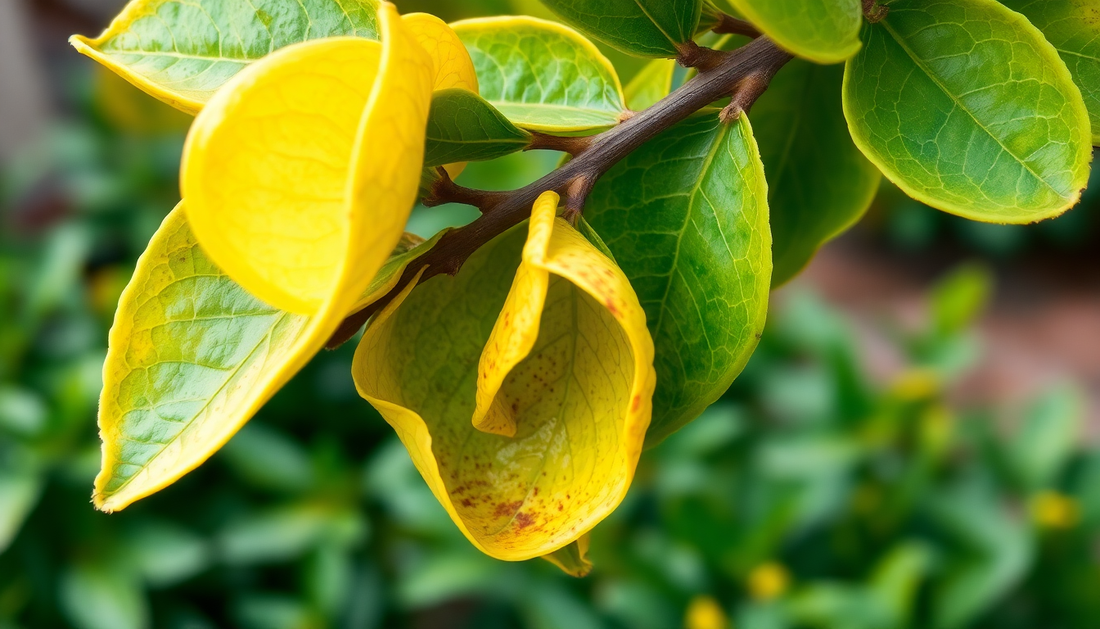
Why Are My Citrus Leaves Curling?
As a gardener, there's nothing more frustrating than seeing your beloved citrus trees struggling with curling leaves. This common issue can be caused by a variety of factors, from environmental stresses to nutrient deficiencies. In this comprehensive blog post, we'll dive deep into the reasons behind citrus leaf curling and provide you with the knowledge and tools to get your trees back on track.
Understanding Citrus Leaf Curling
Citrus trees, such as oranges, lemons, limes, and grapefruits, are known for their vibrant green foliage and delicious fruits. However, when the leaves start to curl, it can be a sign that something is amiss. Leaf curling can manifest in different ways, from slight inward or outward curling to severe cupping or rolling of the leaves.
Causes of Citrus Leaf Curling
There are several potential causes for citrus leaf curling, and identifying the root issue is crucial for effective treatment. Let's explore the most common culprits:
1. Water Stress
One of the primary reasons for citrus leaf curling is water stress, either too much or too little. Overwatering can lead to waterlogged soil, which deprives the roots of oxygen and causes the leaves to curl inward. Conversely, underwatering can cause the leaves to curl upward or outward as the plant tries to conserve moisture.
2. Nutrient Deficiencies
Nutrient imbalances can also contribute to citrus leaf curling. Deficiencies in essential nutrients like nitrogen, phosphorus, potassium, or micronutrients like iron, zinc, or magnesium can cause the leaves to curl and discolor.
3. Pests and Diseases
Certain pests and diseases can also trigger leaf curling in citrus trees. Aphids, mites, and thrips can suck the sap from the leaves, leading to distortion and curling. Additionally, fungal diseases like citrus canker or viral infections can cause the leaves to curl and become discolored.
4. Environmental Factors
Environmental stresses, such as sudden temperature changes, high winds, or excessive sunlight, can also induce leaf curling in citrus trees. These factors can disrupt the plant's natural balance and cause the leaves to curl as a defense mechanism.
Identifying the Cause
To effectively address the issue of citrus leaf curling, it's crucial to identify the underlying cause. Carefully examine the leaves, the soil, and the overall plant health to determine the root of the problem. Look for signs of pests, disease, nutrient deficiencies, or environmental stress, and use this information to guide your treatment plan.
Fixing Citrus Leaf Curling
Once you've identified the cause of the leaf curling, you can take the necessary steps to address the issue and restore the health of your citrus trees. Here are some strategies to consider:
1. Proper Watering
If water stress is the culprit, adjust your watering schedule accordingly. Ensure that the soil is neither waterlogged nor excessively dry. Water deeply and consistently, allowing the soil to dry out slightly between waterings. Use a moisture meter to monitor the soil's moisture levels and adjust your watering routine as needed.
2. Balanced Fertilization
Correct any nutrient deficiencies by applying a balanced, slow-release citrus-specific fertilizer. Follow the manufacturer's instructions and apply the fertilizer at the recommended intervals. Additionally, consider using a foliar spray or soil amendment to address specific nutrient deficiencies.
3. Pest and Disease Management
If pests or diseases are the cause of the leaf curling, take appropriate action. Use organic or natural pest control methods, such as introducing beneficial insects or applying neem oil, to eliminate the problem. For fungal diseases, consider using a fungicide approved for citrus trees.
4. Environmental Adjustments
If environmental factors are contributing to the leaf curling, make necessary adjustments to the plant's growing conditions. Provide shade or wind protection if the tree is exposed to excessive sunlight or strong winds. Gradually acclimate the tree to any sudden temperature changes to minimize stress.
5. Pruning and Maintenance
Regular pruning and maintenance can also help address citrus leaf curling. Remove any damaged, diseased, or severely curled leaves to encourage new, healthy growth. Prune the tree to improve air circulation and light penetration, which can help prevent future issues.
Preventing Future Leaf Curling
To keep your citrus trees healthy and prevent future leaf curling, follow these best practices:
- Establish a consistent watering routine, adjusting as needed based on weather and soil conditions.
- Provide a balanced, citrus-specific fertilizer at the recommended intervals.
- Monitor for pests and diseases regularly, and take prompt action to address any issues.
- Protect your trees from environmental stresses, such as excessive sun or wind.
- Prune and maintain your citrus trees regularly to promote optimal growth and air circulation.
By understanding the causes of citrus leaf curling and implementing the right strategies, you can keep your citrus trees thriving and enjoy a bountiful harvest of delicious fruits. Remember, patience and diligence are key when it comes to maintaining the health of your citrus trees.
Conclusion
Citrus leaf curling can be a frustrating issue, but with the right knowledge and approach, you can get your trees back on track. By identifying the underlying cause, whether it's water stress, nutrient deficiencies, pests, diseases, or environmental factors, and taking the appropriate corrective actions, you can restore the vibrant, healthy foliage of your citrus trees. Consistent care and attention to your citrus plants will ensure they continue to thrive and provide you with a bountiful harvest for years to come.







No comments